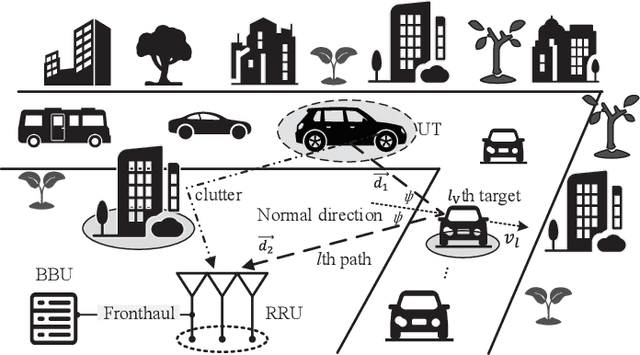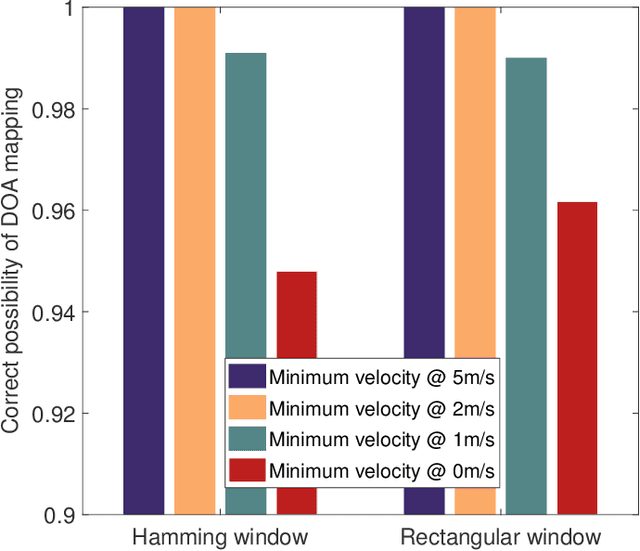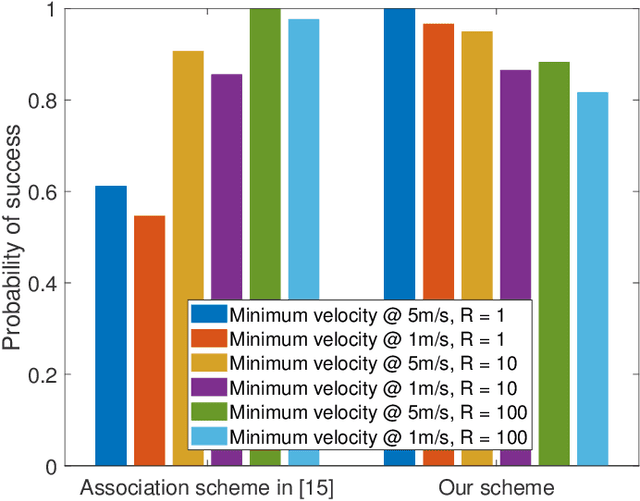Clutter Suppression, Time-Frequency Synchronization, and Sensing Parameter Association in Asynchronous Perceptive Vehicular Networks
Paper and Code
Sep 02, 2024



Significant challenges remain for realizing precise positioning and velocity estimation in perceptive vehicular networks (PVN) enabled by the emerging integrated sensing and communication technology. First, complicated wireless propagation environment generates undesired clutter, which degrades the vehicular sensing performance and increases the computational complexity. Second, in practical PVN, multiple types of parameters individually estimated are not well associated with specific vehicles, which may cause error propagation in multiple-vehicle positioning. Third, radio transceivers in a PVN are naturally asynchronous, which causes strong range and velocity ambiguity. To overcome these challenges, 1) we introduce a moving target indication based joint clutter suppression and sensing algorithm, and analyze its clutter-suppression performance and the Cramer-Rao lower bound of the paired range-velocity estimation upon using the proposed clutter suppression algorithm; 2) we design algorithms for associating individual direction-of-arrival estimates with the paired range-velocity estimates based on "domain transformation"; 3) we propose the first viable carrier frequency offset (CFO) and time offset (TO) estimation algorithm that supports passive vehicular sensing in non-line-of-sight environments. This algorithm treats the delay-Doppler spectrum of the signals reflected by static objects as an environment-specific "fingerprint spectrum", which is shown to exhibit a circular shift property upon changing the CFO and/or TO. Then, the CFO and TO are efficiently estimated by acquiring the number of circular shifts, and we also analyse the mean squared error performance of the proposed time-frequency synchronization algorithm. Simulation results demonstrate the performance advantages of our algorithms under diverse configurations, while corroborating the theoretical analysis.
 Add to Chrome
Add to Chrome Add to Firefox
Add to Firefox Add to Edge
Add to Edge